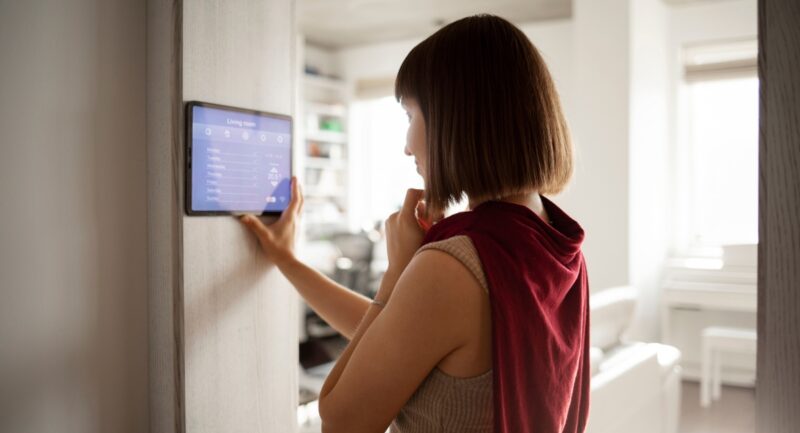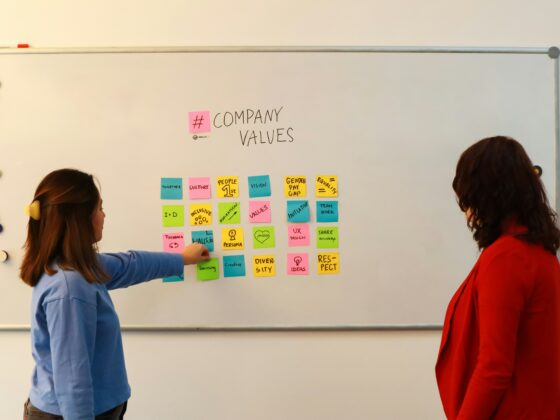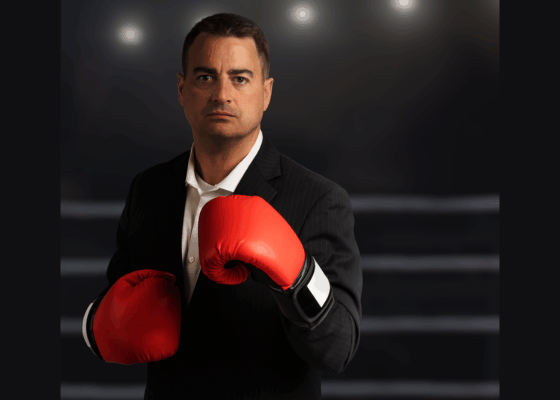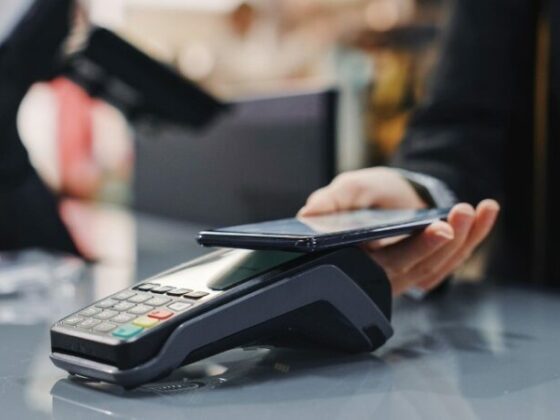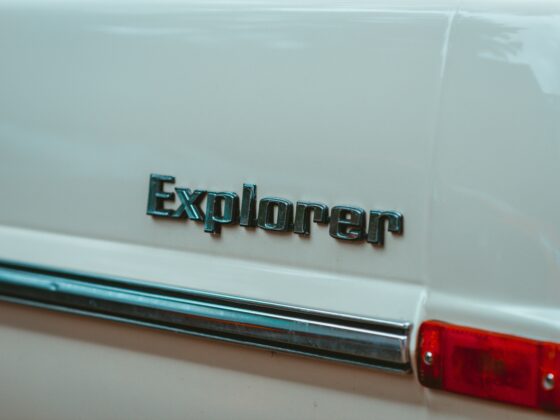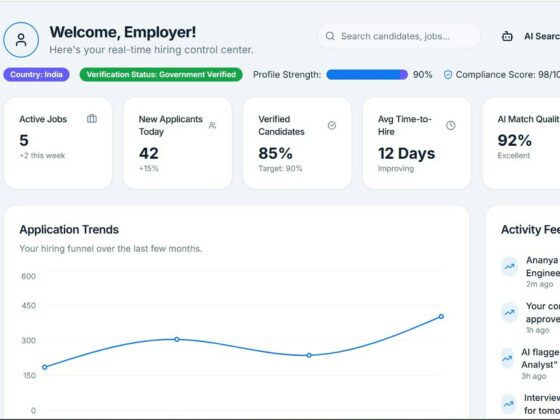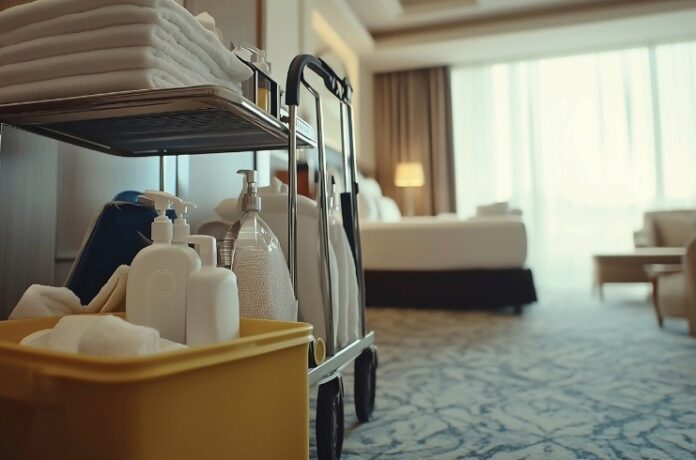
Sanitation is one of the fundamentals of delivering a positive guest experience. Equipping housekeepers with quality cleaners and disinfectants ensures that guestrooms and public spaces are not only immaculate, but also free from harmful germs. The latter became a major priority during the COVID-19 pandemic, and the hospitality industry has continued to implement robust disinfection along with cleaning, observed Jeff Singer, CEO of Wexford Labs, which has engineered antimicrobial solutions since 1973. “Pre-COVID, most disinfectants were being used within the healthcare environment, and very few were being used in the hospitality space. But what’s happened is that [the hospitality industry] now understands the importance of disinfecting the telephone, the TV clicker, gym equipment, etc., which a lot of people come in contact with daily.”
Disinfectants have also improved in effectiveness since COVID and are now able to kill a broader range of pathogens more rapidly. And both cleaners and disinfectants have, in general, become more efficient. In part, those advances were “driven by a focus on helping hotels make the most of their labor resources and improve the user experience to help boost [housekeeper] retention,” explained Amanda Bakken, formulation chemist and disinfection expert, Ecolab. “Multi-use, fast-acting, and simplified products paired with innovative tools, such as extendable poles for hard-to-reach places, help get rooms clean and ready for check-in faster and can help make a housekeepers’ job easier and more enjoyable. There are also operational benefits as there are fewer products to track and order as well as less training required on how to use them.”
The need for cleaners and disinfectants for hotels that welcome pets has also risen since the pandemic, she noted. “An increase in leisure travelers vacationing with pets left hotels facing new cleaning challenges, such as killing pathogens left behind by pets and tackling tough biological stains and odors. Companies like Ecolab offer comprehensive programs designed to tackle these specific challenges to hotels who welcome pet guests.”
All these sanitation product enhancements and efforts by hotel teams are ultimately driven by guests, who have continued to expect a high level of guestroom and public space cleanliness ever since COVID. A 2025 Ecolab study of more than 500 hotel consumers shows that sanitation remains a top area that hotels should focus on to improve the guest experience, Bakken pointed out. Thus, staying current on the latest and most effective cleaners and disinfectants is to the advantage of hotel operators.
Leading-Edge Products
Multi-use applications have been a major efficiency driver by “reducing the number of products being used and the amount of training required, making it easier for staff to select the right product for the task at hand,” Bakken explained. A prime example is Ecolab’s Rapid Multi Surface Disinfectant Cleaner (EPA Reg. No. 1677-272), a flexible 4-in-1 disinfectant cleaner that is “designed for use in a wide variety of spaces, providing streak-free cleaning on glass and mirrors and a pleasant experience for staff,” she said. “It not only reduces the number of products needed, helps drive efficiency, and simplifies cleaning procedures, but also kills viruses most responsible for community-spread illnesses in 30 seconds or less.
This is an important improvement from having to train staff to leave surfaces wet for the five or 10 minutes it takes to disinfect with other products with longer kill times.” Another Ecolab solution that drives efficiencies is the Scrub Free Bathroom Cleaner & Disinfectant (EPA Reg. No. 1677-256) and Foamer, which expedites bathroom cleaning by reducing the uncomfortable bending and reaching room attendants must do. “When used daily, the full-coverage foam and chemistry work together to penetrate tough soils and disinfect hard surfaces in one step and remove the need for daily scrubbing,” she said.
Wexford Labs’ recently released Purefexion Wipes exemplify the trend toward disinfectants formulated with safer ingredients. These products can offer the same powerful disinfecting as the company’s CleanCide Wipes while also being a part of the EPA’s Design for Environment Program and meeting their standard for compostability. Purefexion Wipes is a patented citric acid-based germicidal product that offers the EPA’s lowest level of toxicity (Category IV), thus lacking the potentially harmful, irritating effects of other chemical disinfectants. At the same time, the product is effective against organisms and approved on LIST N, which means it kills SARS-CoV-2 (the cause of COVID-19) when used according to the label directions.
Toward Safer Sanitation
Striking a balance between the killing power of these products and user and consumer safety has become increasingly important, given mounting evidence that regular exposure to higher-toxicity products can lead to dermal toxicity and respiratory afflictions. Safety features not only include product formulations, but also “equipment and lock-out packaging that helps reduce the potential for exposure to chemicals,” noted Bakken. “Companies like Ecolab, who place an emphasis on the importance of safe practices, provide customers with tools, resources, and education on proper use to promote worker safety.”
A related initiative is the education of the hospitality industry on the importance and availability of safer cleaners and disinfectants. “The focus for us is to continue to educate the market. For example, we have an education piece that talks about how to read disinfectant labels and become a more knowledgeable consumer,” said Singer. “They may not choose our product. There are other products out there that are also green with low toxicity, but we’ll take our chance by just educating the market and let the market make their own choices.” This educational effort takes time, and Singer compared it to how consumers began to “understand the difference between organic and non-organic foods,” which “took a long time.”
For hotel operators looking for the safest and most sustainable cleaners and disinfectants available, Singer suggested they look for the EPA’s Safer Choice Program logo, which identifies products that perform and contain ingredients that are safer for human health and the environment, or the EPA’s Design for the Environment (DfE) logo, which appears on antimicrobial products like disinfectants and sanitizers. Product sustainability considerations also include packaging waste and designing for low levels of volatile organic compounds (VOCs), helping minimize impacts to the air, Bakken added. Low-hazard products are also preferable, she noted, as they “do not require staff to wear personal protective equipment (PPE) at use-dilution for a more positive user experience.” While the guest experience is the focus of sanitation efforts, making the process both safe and streamlined for staff is a valuable aspect that should not be overlooked.
Cleaning vs. Disinfection
Cleaning removes dirt and impurities from surfaces, while disinfection kills germs. Not all disinfectants are cleaners (removing soil, dust, food debris, etc.). Cleaning should precede disinfection when there is significant buildup of these substances on the surface, or when there is the possibility of contamination with blood or body fluid. Cleaning is very important even when the surface is visibly clean. There are “one-step” disinfectants available, meaning they both clean and disinfect in one step. Jeff Singer, CEO of Wexford Labs, explained this feature: “It is a one-two punch. The friction of cleaning removes the soil and debris from surfaces that germs need to thrive. Disinfection kills any remaining organisms.” Wexford Labs’ CleanCide Wipes are an example of a one-step cleaning and disinfecting product.

